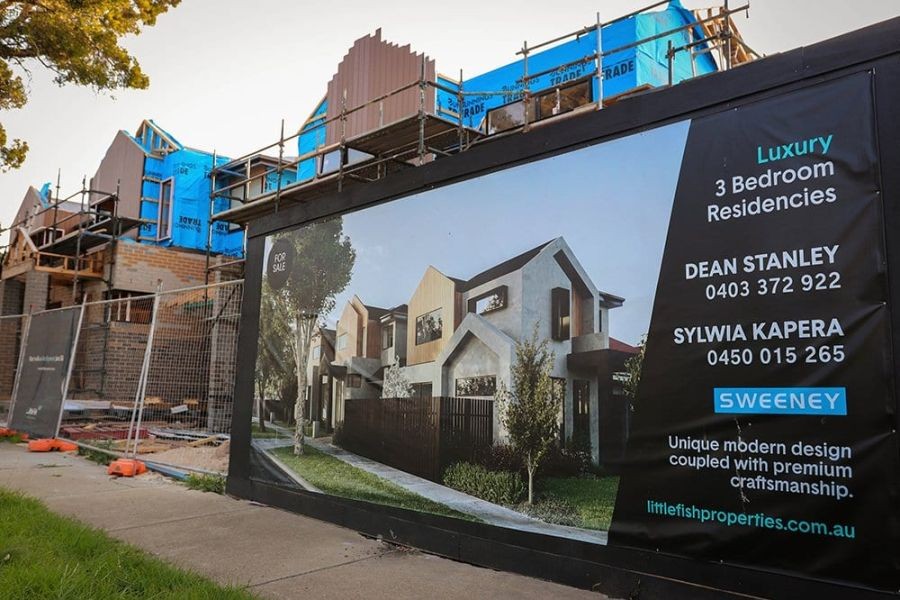Australia's real estate market has long been a beacon for investors, both domestic and international. However, the allure of buying off-the-plan properties, which are purchased before construction is complete, brings with it a slew of hidden risks that can catch even seasoned investors off guard. This practice, while seemingly advantageous, warrants a deeper dive into the potential pitfalls that can affect financial outcomes and market stability.
Understanding Off-the-Plan Properties
The concept of buying off-the-plan involves purchasing a property based on architectural plans, with the promise of future completion. While this can offer benefits such as lower initial costs and potential capital growth, the hidden risks are significant. Investors often face uncertainties regarding construction timelines, quality of the finished product, and market fluctuations.
Market Trends in Australia
In recent years, the Australian real estate market has experienced fluctuating trends. According to the Australian Bureau of Statistics, property prices in major cities like Sydney and Melbourne have seen a marked increase of 12% in 2024, outpacing wage growth. This rapid appreciation, while beneficial for existing homeowners, poses challenges for off-the-plan buyers who may find their investment value misaligned with market realities upon completion.
Hidden Risks of Off-the-Plan Purchases
Despite the potential for capital gains, off-the-plan investments carry risks that are often underestimated:
- Construction Delays: Unforeseen delays can extend the timeline significantly, affecting financial planning and mortgage arrangements.
- Quality Discrepancies: The finished property may not meet the expected quality or design, leading to potential disputes and additional costs.
- Market Volatility: Changes in the real estate market during the construction period can alter the property's value, impacting potential returns.
- Regulatory Risks: Changes in policies or regulations, such as those by the Australian Competition & Consumer Commission (ACCC), can affect investment viability.
Case Study: A Cautionary Tale
Case Study: Greenfield Apartments – The Perils of Delayed Projects
Problem: Greenfield Apartments, a high-profile off-the-plan project in Melbourne, faced significant construction delays due to supplier issues and regulatory changes. Investors were initially lured by promises of high returns and a prime location.
Action: The developer attempted to mitigate delays by securing additional funding and streamlining processes. However, communication with investors was inadequate, leading to growing frustration.
Result: The project was completed two years behind schedule, during which the property market experienced a downturn. Investors faced lower-than-expected returns, with some selling at a loss to exit the investment.
Takeaway: This case underscores the importance of conducting thorough due diligence and preparing for unforeseen circumstances in off-the-plan investments. Investors must scrutinize developer credentials and market trends to safeguard their investments.
Regulatory Insights
The Australian Prudential Regulation Authority (APRA) plays a crucial role in maintaining the stability of the financial system, including real estate investments. Changes in lending standards and regulatory requirements can influence the feasibility of off-the-plan purchases. Investors must stay informed about APRA's guidelines to navigate potential pitfalls effectively.
Pros and Cons of Off-the-Plan Investments
Understanding the pros and cons can help investors make informed decisions:
✅ Pros:
- Potential Capital Gains: Secure properties at today’s prices, potentially benefiting from future market appreciation.
- Customizable Options: Buyers often have the opportunity to personalize finishes and layouts.
- Tax Benefits: Investors may access tax deductions on interest during construction.
- Lower Initial Costs: Staged payments and lower deposit requirements can ease financial burdens initially.
❌ Cons:
- Market Uncertainty: Future market conditions can affect property value at completion.
- Construction Risks: Delays and quality issues can lead to financial and legal challenges.
- Financing Challenges: Changing lending conditions may affect mortgage approval at settlement.
Debunking Common Myths
Several myths persist about off-the-plan investments, often leading to misguided decisions:
Myth: "Off-the-plan properties always appreciate in value."
Reality: Market conditions can fluctuate, and not all properties increase in value. The RBA notes that housing affordability issues may limit future price growth.
Myth: "Developers are always reliable."
Reality: Due diligence is crucial. Not all developers have a track record of delivering quality projects on time.
Myth: "You can easily sell before completion."
Reality: Selling off-the-plan properties before completion can be challenging, especially in a volatile market.
Future Trends & Predictions
As Australia continues to navigate economic uncertainties, the future of off-the-plan investments remains uncertain. By 2026, policy updates and market adjustments could reshape investment strategies. According to CoreLogic, technological advancements in construction and real estate data analytics will play a pivotal role in mitigating risks and enhancing investor confidence.
Final Takeaways & Call to Action
- Conduct Thorough Research: Investors should meticulously evaluate developers and market conditions before committing to off-the-plan purchases.
- Stay Informed: Keeping abreast of regulatory changes and economic trends is crucial for making informed investment decisions.
- Consider Diversification: Diversifying investments can mitigate risks associated with off-the-plan properties.
- Engage Experts: Consulting with real estate professionals and financial advisors can provide valuable insights and guidance.
As Australia's real estate landscape evolves, understanding the nuances of off-the-plan investments is essential for safeguarding financial interests. Engage in discussions on LinkedIn AU or Business Council of Australia groups to share insights and strategies with fellow investors. What strategies have you employed to navigate the complexities of off-the-plan investments in Australia?
People Also Ask (FAQ)
How do off-the-plan investments impact the Australian real estate market? Off-the-plan investments can influence housing supply and demand dynamics in Australia. These investments often contribute to market volatility due to construction timelines and price fluctuations.
What are the main risks of buying off-the-plan properties? Key risks include construction delays, quality discrepancies, market volatility, and regulatory changes. These factors can significantly impact investment returns and financial stability.
How can investors mitigate risks in off-the-plan purchases? Investors can mitigate risks by conducting thorough due diligence, engaging reputable developers, staying informed about regulatory changes, and consulting with financial advisors.
Related Search Queries
- Off-the-plan property investment risks Australia
- Real estate market trends Australia 2025
- Pros and cons of buying off-the-plan
- Regulatory changes in Australian real estate
- Future of off-the-plan investments
- Construction delays impact on property value
- Buying property before completion Australia
- Australian Prudential Regulation Authority guidelines
- Real estate investment strategies Australia
- Housing market predictions Australia 2026






























LashondaWh
6 months ago